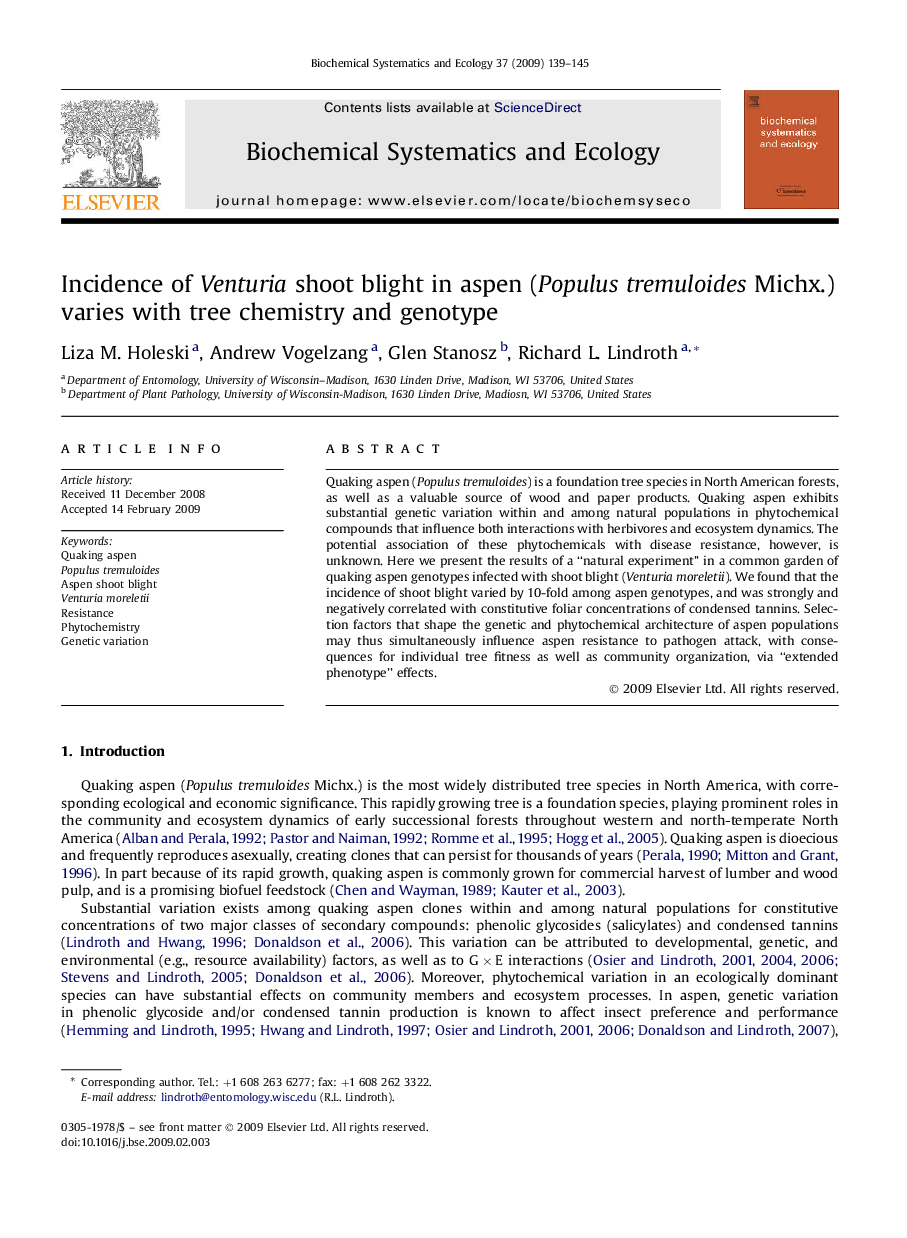| Article ID | Journal | Published Year | Pages | File Type |
|---|---|---|---|---|
| 1354442 | Biochemical Systematics and Ecology | 2009 | 7 Pages |
Quaking aspen (Populus tremuloides) is a foundation tree species in North American forests, as well as a valuable source of wood and paper products. Quaking aspen exhibits substantial genetic variation within and among natural populations in phytochemical compounds that influence both interactions with herbivores and ecosystem dynamics. The potential association of these phytochemicals with disease resistance, however, is unknown. Here we present the results of a “natural experiment” in a common garden of quaking aspen genotypes infected with shoot blight (Venturia moreletii). We found that the incidence of shoot blight varied by 10-fold among aspen genotypes, and was strongly and negatively correlated with constitutive foliar concentrations of condensed tannins. Selection factors that shape the genetic and phytochemical architecture of aspen populations may thus simultaneously influence aspen resistance to pathogen attack, with consequences for individual tree fitness as well as community organization, via “extended phenotype” effects.
